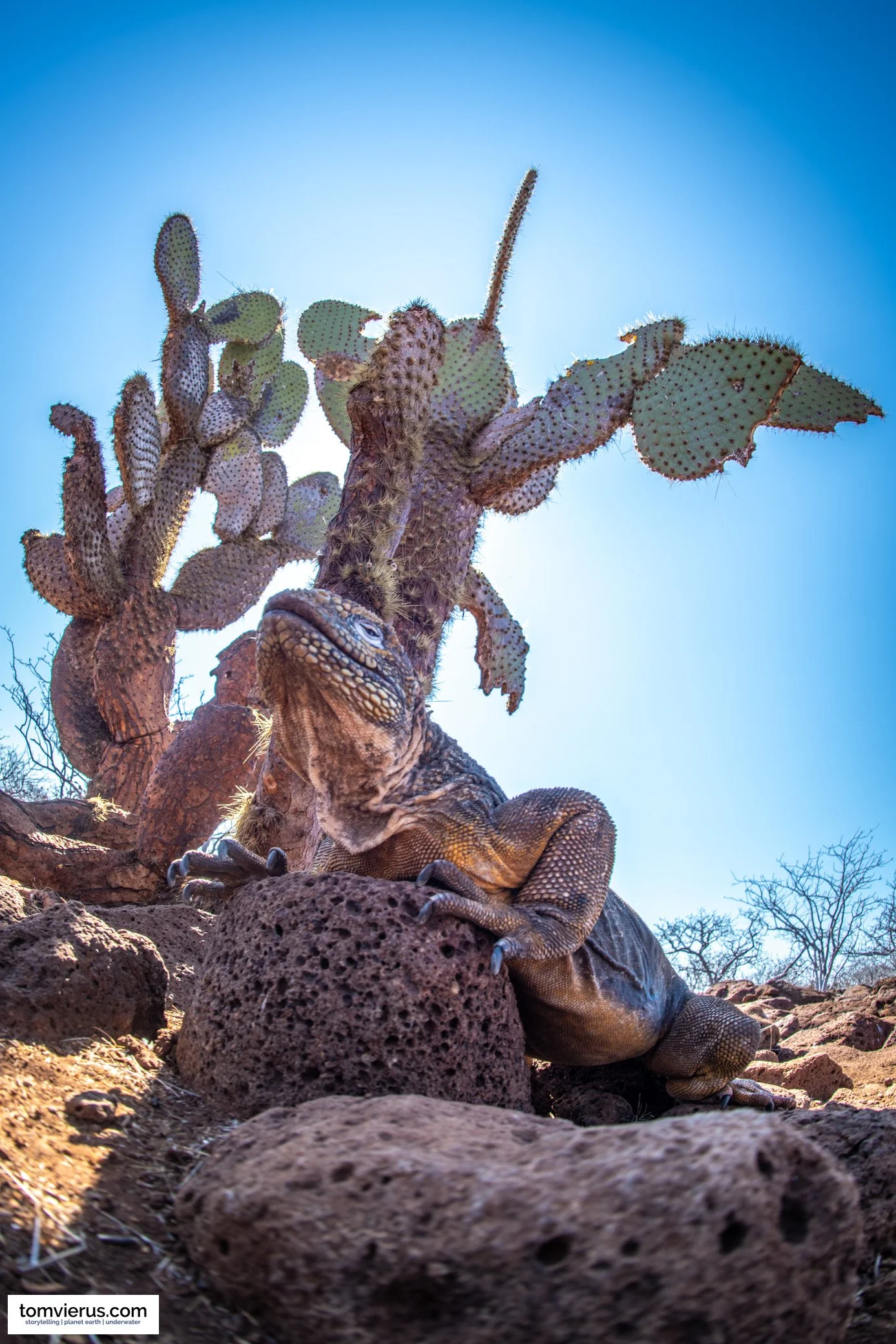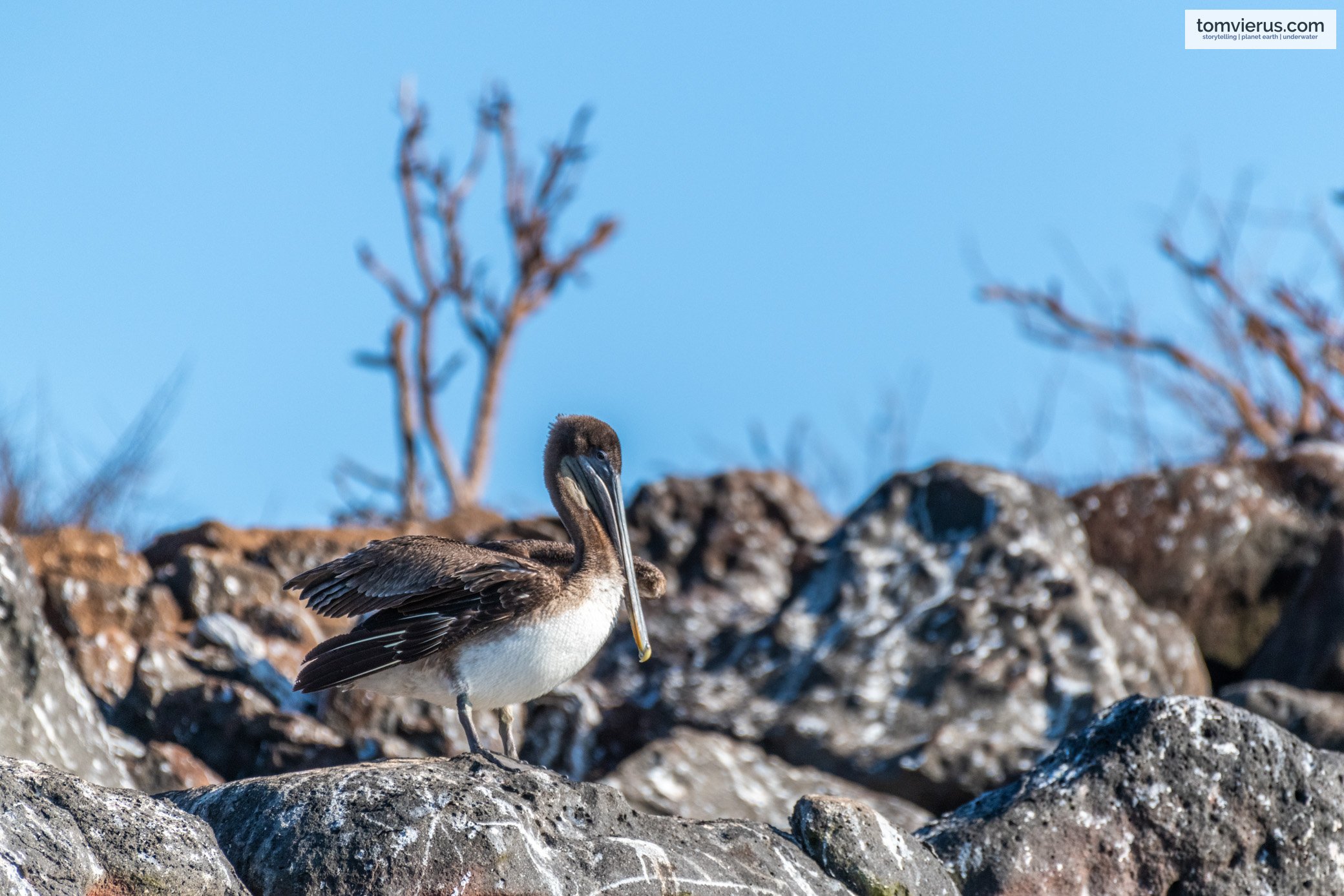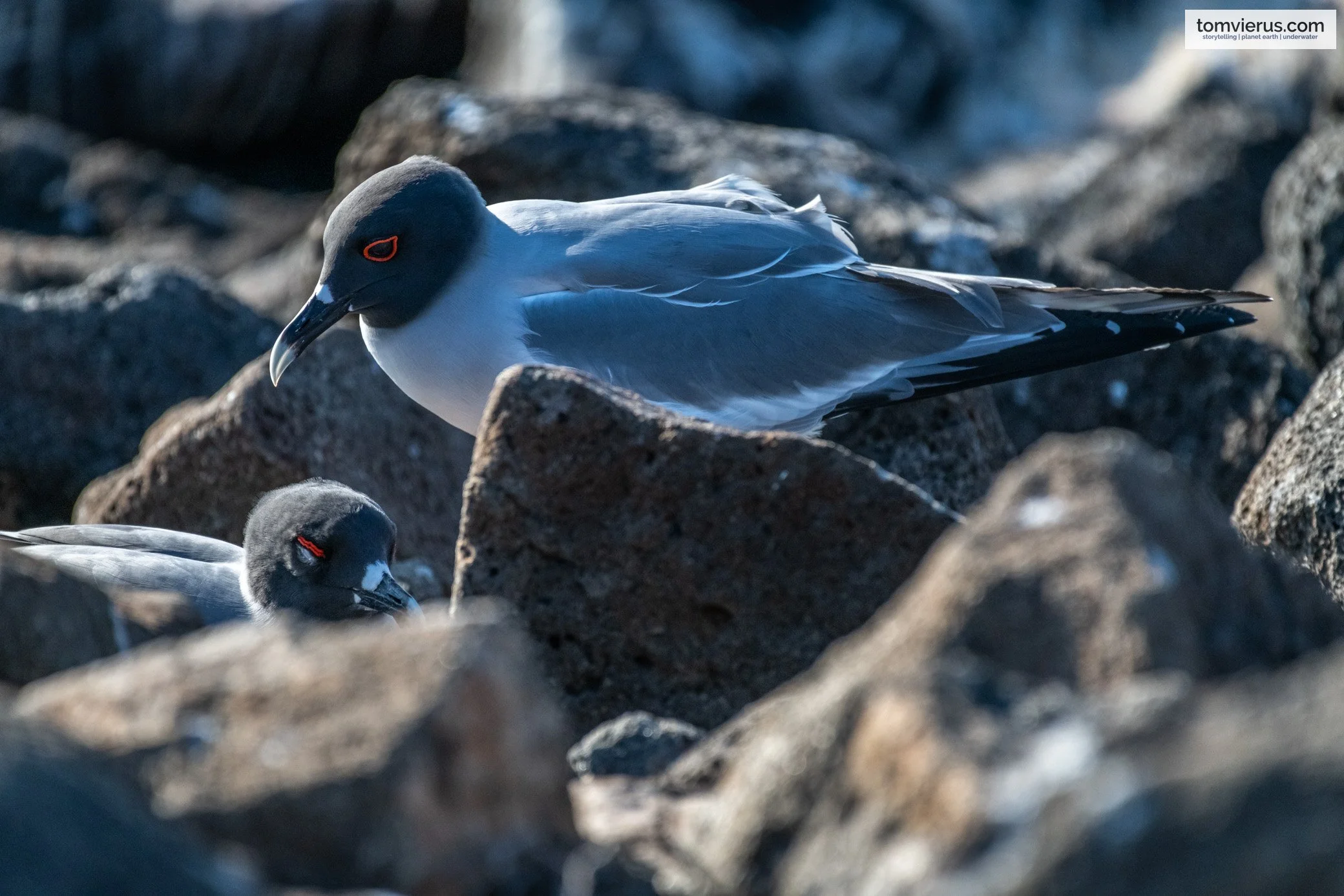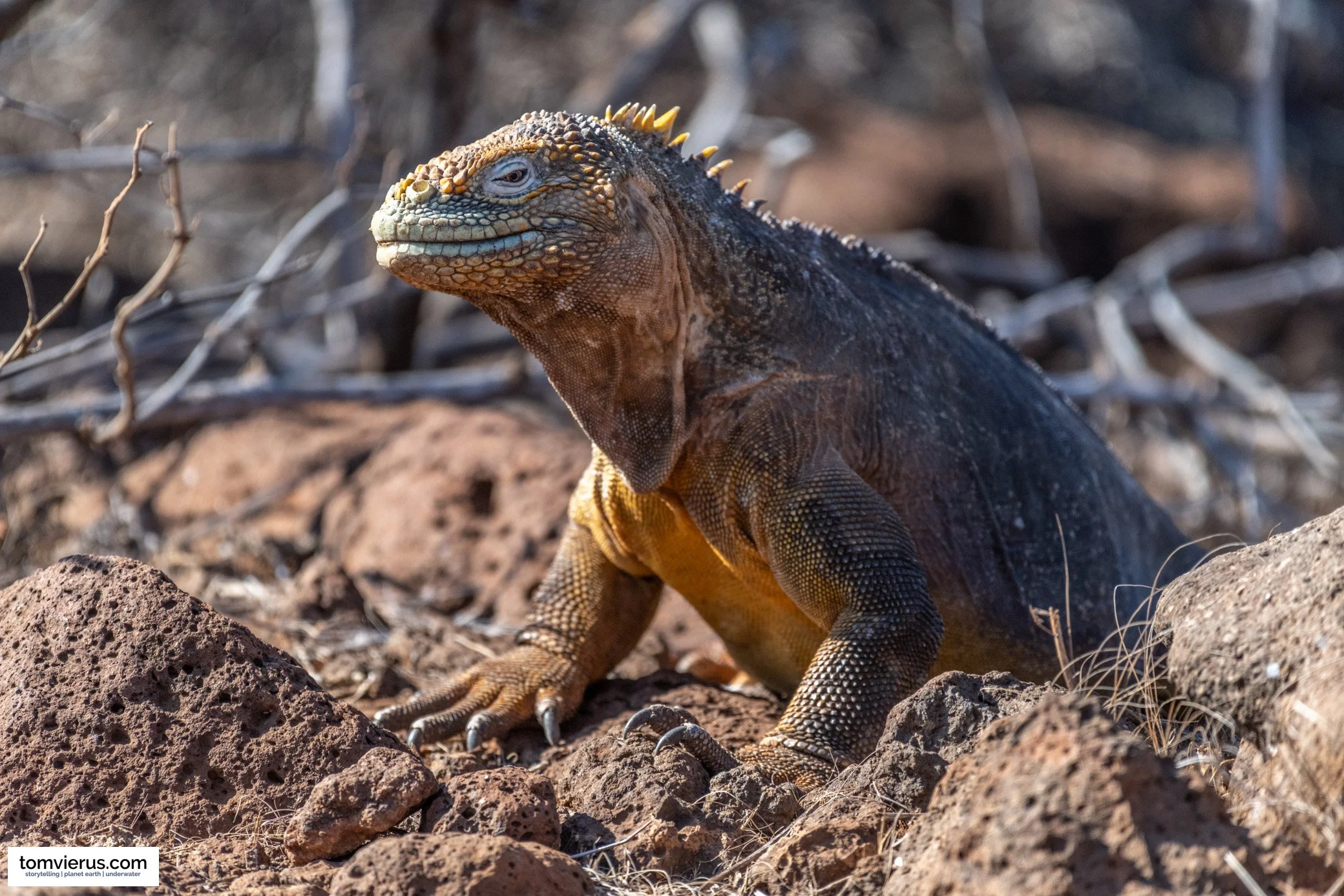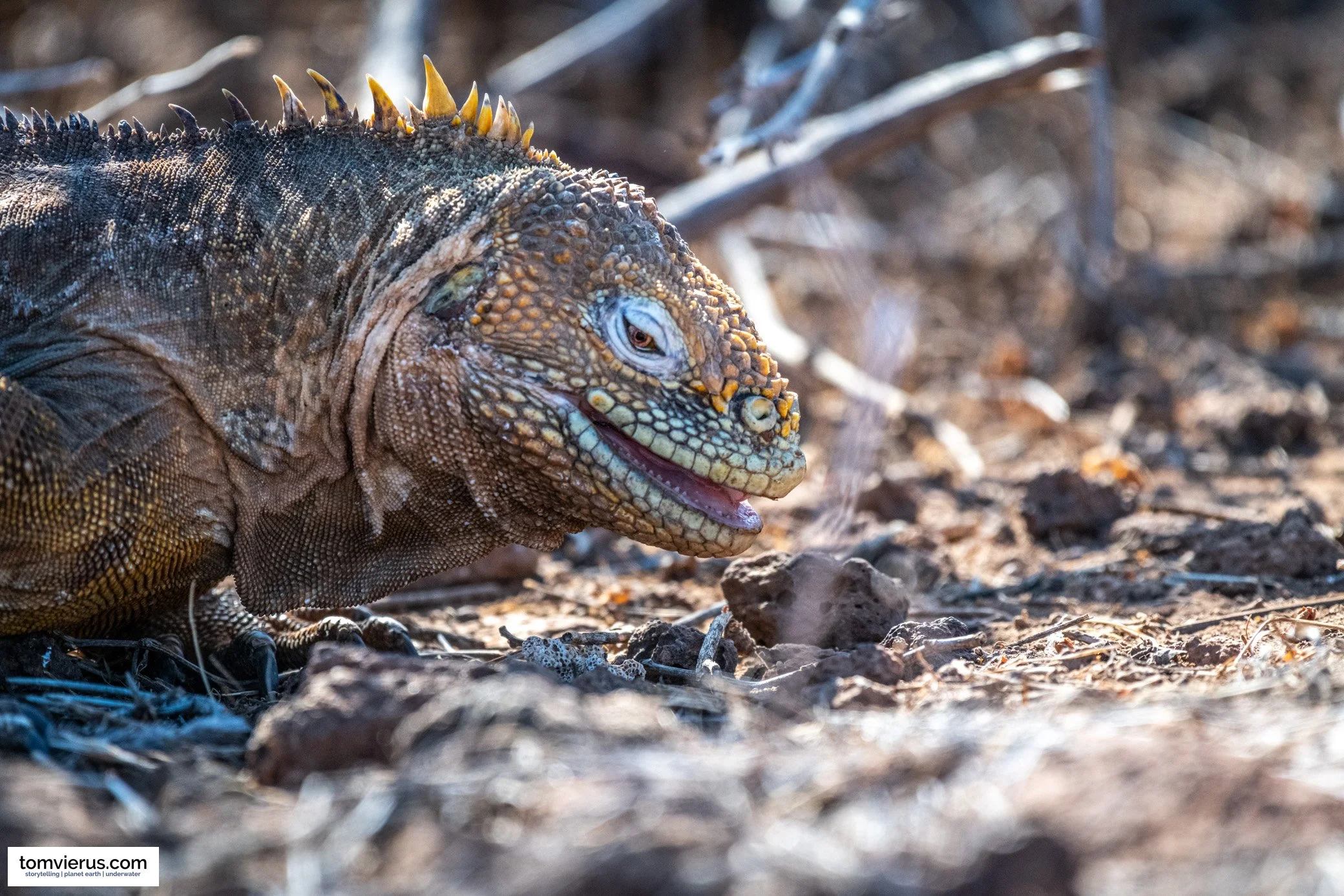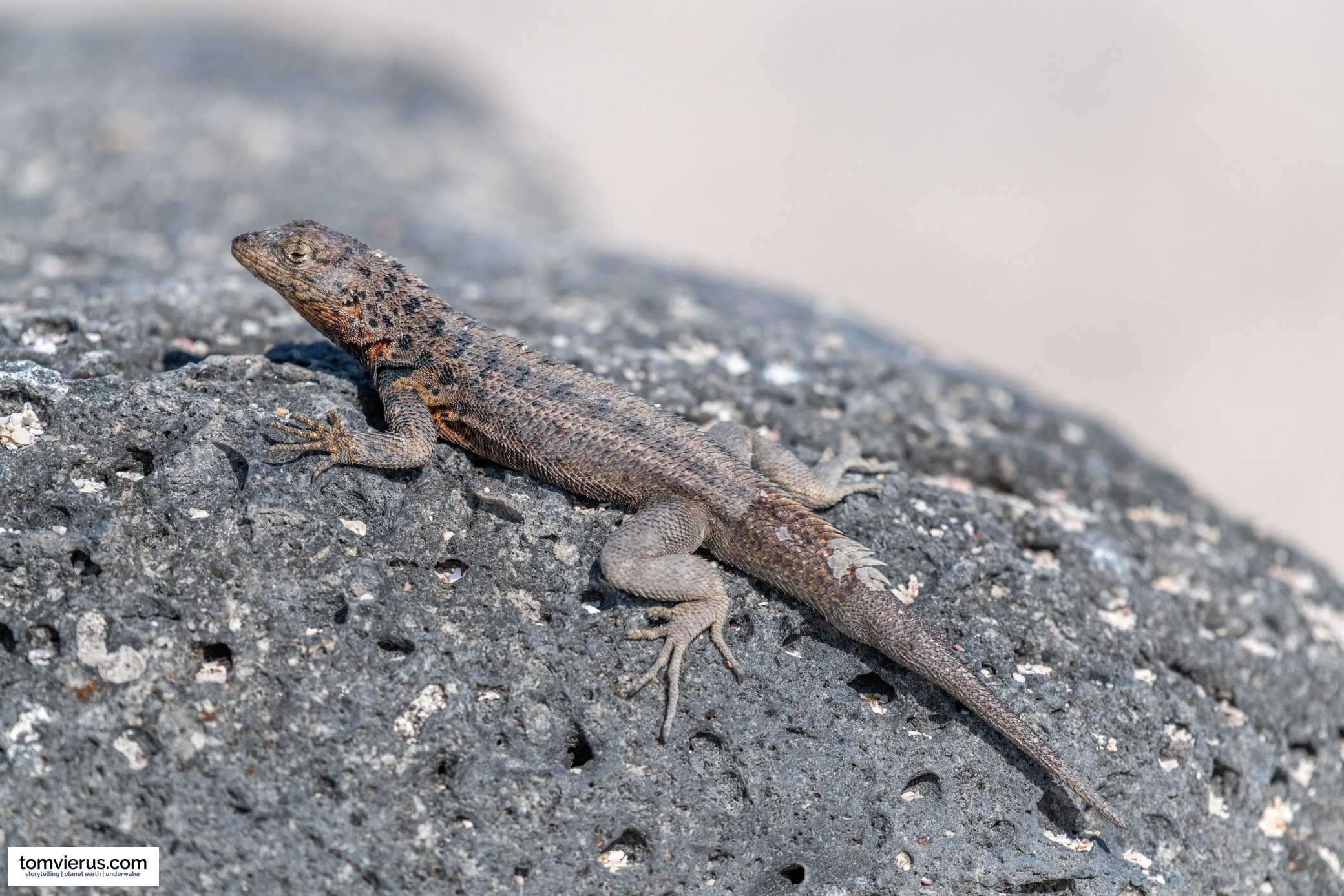Photographing birds on North Seymour Island | Galápagos Archipelago | Part 2
This series of posts is about an 11-day liveaboard trip throughout the Galápagos Islands aboard the Deep Blue with the Master Liveaboard Fleet. Having shot several thousand images, I thought I would share a few more here than on my other social channels, but be sure to check out my Instagram, TikTok, Youtube, and Twitter for more. This part is about an included land stop on North Seymour Island. Have a look at the other posts in this series.
North Seymour Islands is located in the centre of the Galapagos Archipelago, directly next to Baltra Island. It is a small, uninhabited island (only about 1.9 square kilometres in size) but home to thousands of birds and a population of Galápagos land iguanas (Conolophus subcristatus).
A Galápagos Land Iguana(Conolophus subcristatus) resting at the foot of an Opuntia cactus. These iguanas feed on cactus pads and fruits.
During a recent diving trip to the Galapagos Islands, North Seymour was one of two land visits that were part of the cruise, and we had a great one-and-a-half-hour walk along the trails present on the island (remember that a local guide who officially works for the Galápagos National Park must be present).
Portrait of a Brown Pelican (Pelecanus occidentalis) resting on a rock.
Portrait of a Blue-footed Booby (Sula nebouxii).
Two Swallow-tailed Gulls (Creagrus furcatus) rest on the ground between rocks on North Seymour Island, Galapagos Archipelago. These birds are mostly seen resting during the day, as this species is the only fully nocturnal seabird in the world.
Already from the boat, we could see the hundreds of seabirds sitting along the rocky shoreline and circling above the island. The entire island is covered with low, arid, bushy vegetation with some small trees and a Palo Santo and Opuntia Cactus forest. The present land iguanas feed on cactus pads and fruits, and there is an interesting back story to these stunning animals and their presence here on North Seymour.
A Galápagos sea lion (Zalophus wollebaeki) surfs a wave just off North Seymour Island in the Galapagos Archipelago.
A Galápagos Land Iguana (Conolophus subcristatus) foraging on North Seymour Island in the Galapagos Archipelago.
A Galápagos Land Iguana (Conolophus subcristatus) foraging on North Seymour Island in the Galapagos Archipelago.
A Brown Pelican (Pelecanus occidentalis) flies low above the ocean along the shores of North Seymour Island in the Galapagos Archipelago.
Back in the 1930s, a naturalist called Allan Hancock decided to take a few dozen land iguanas from the neighbouring Baltra Island and release them on Nort Seymour, where no iguanas were present at the time when the Americans set up a naval base on Baltra Island, the extractive activities by the American army led to a collapse of the Baltra land iguana population. This time, Hancock's little experiment paid off, and land iguanas were captured on North Seymour and transported back to Baltra, where the population eventually recovered.
A Great Egret(Ardea alba) lands on the shore of North Seymour Island in the Galapagos Archipelago.
A male Magnificent Frigatebird (Fregata magnificens) sisplays its slightly inflated gular sac in order to attract a mate.
A female frigatebird (likely a Magnificent Frigatebird, Fregata magnificens) resting on a small tree.
Two Galápagos sea lions (Zalophus wollebaeki) bask in the sun on the shore.
A little frigate bird chick sleeps on the rocky ground on North Seymour Island in the Galapagos Archipelago.
A trio of blue-footed boobies – magnificent fish hunters – fly in formation at the shore.
A male Magnificent Frigatebird (Fregata magnificens) and a chick rest on a nest.
North Seymour is also home to a colony of swallow-tail gulls (Creagrus furcatus), a very specialised gull: it is the only full nocturnal (active at night) seabird in the world feeding on small fish and squid it catches at night. The Galapagos Islands are a truly special place with such an incredible abundance and variety of life..
A small ground finch jumping along the rocks around the shore of the island.
A Pacific iguana warms at in the morning sun on a small rock.
A Frigatebird female flies low above the ground on North Seymour Island in the Galapagos Archipelago.
Galápagos Islands Series
The next stop will again be Wolf Island, with lots of spotted eagle rays and more hammerhead shark sightings!


